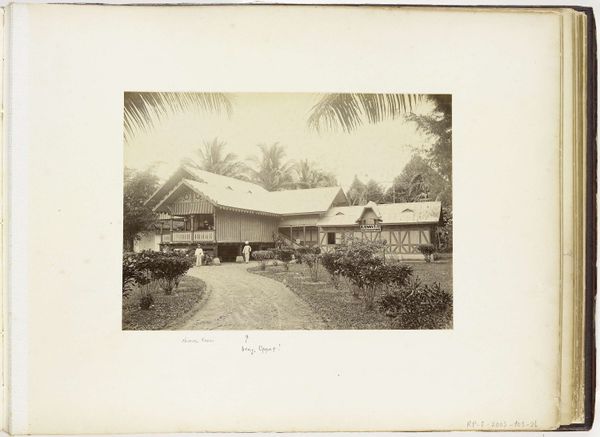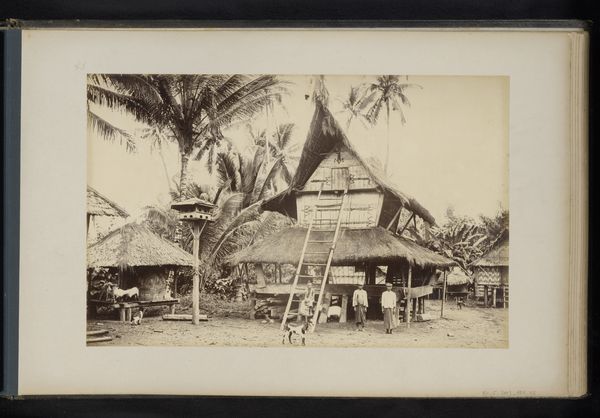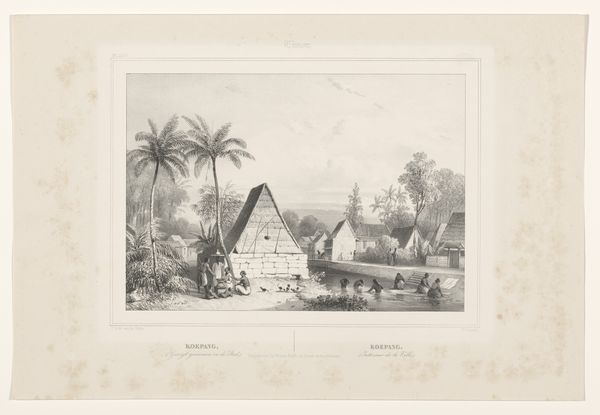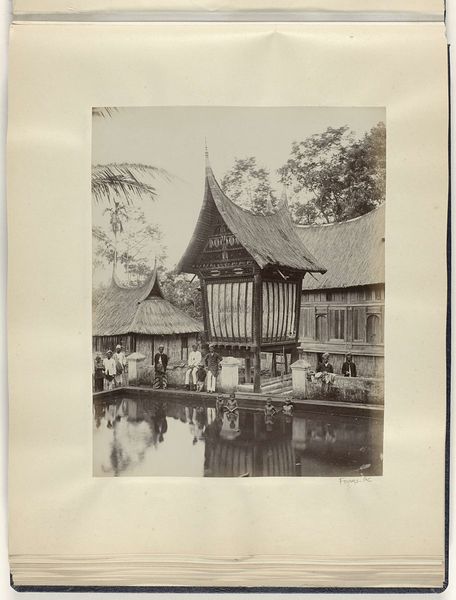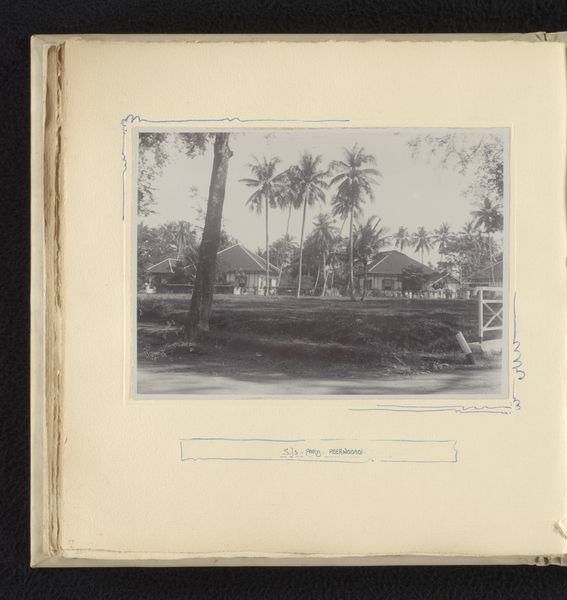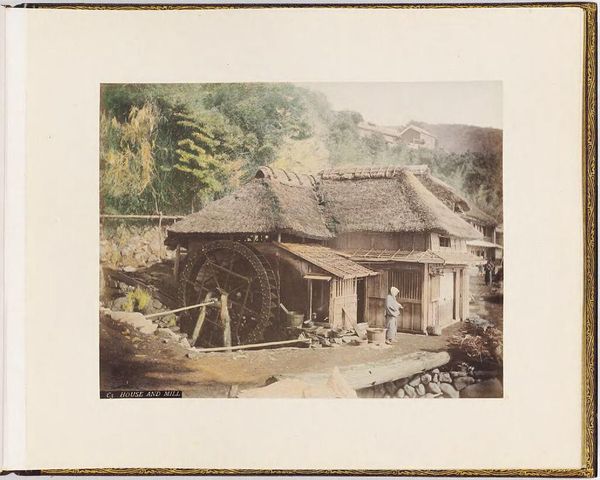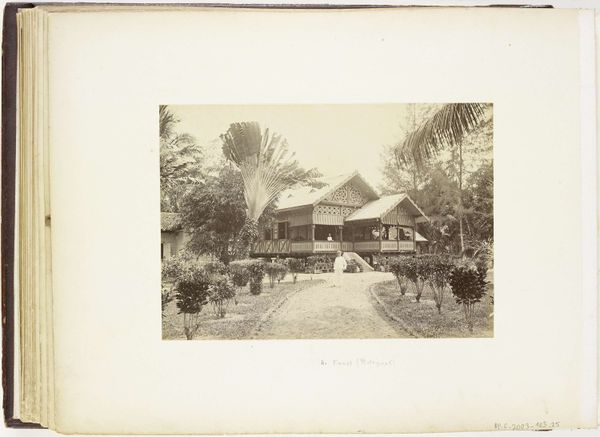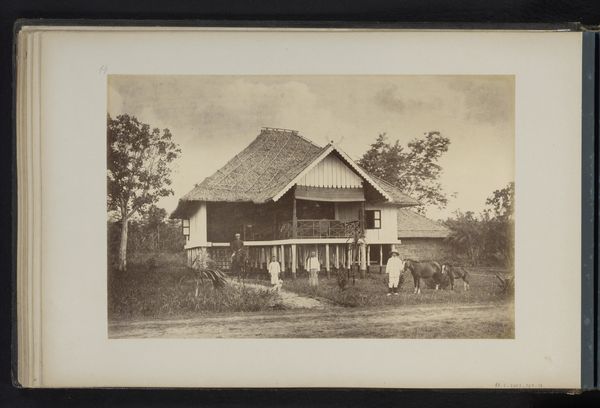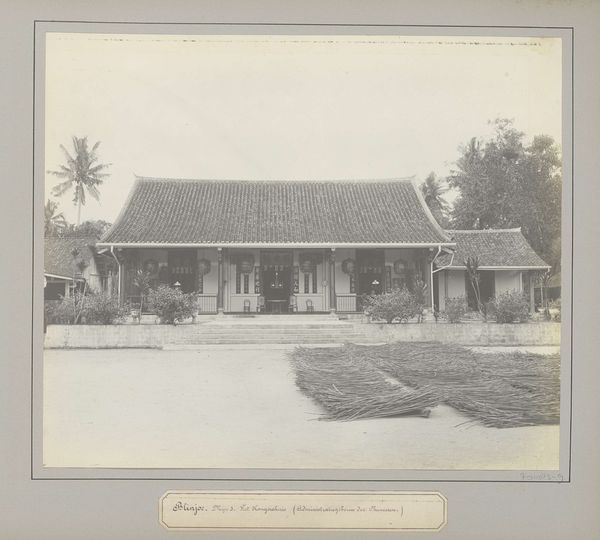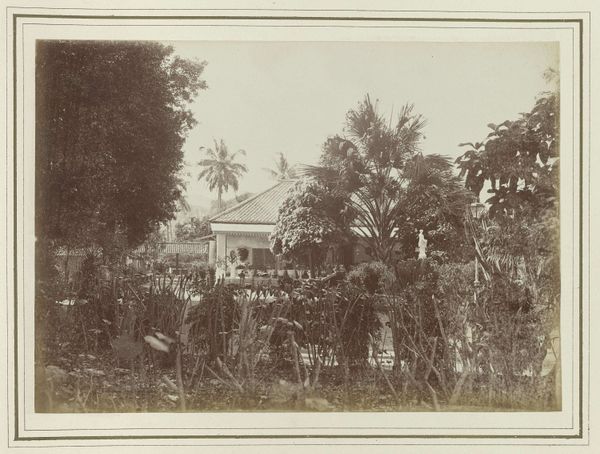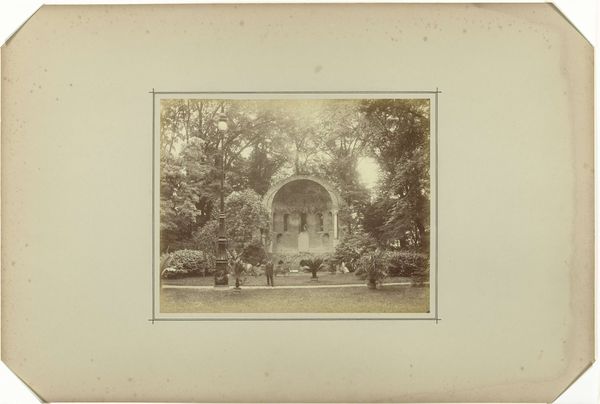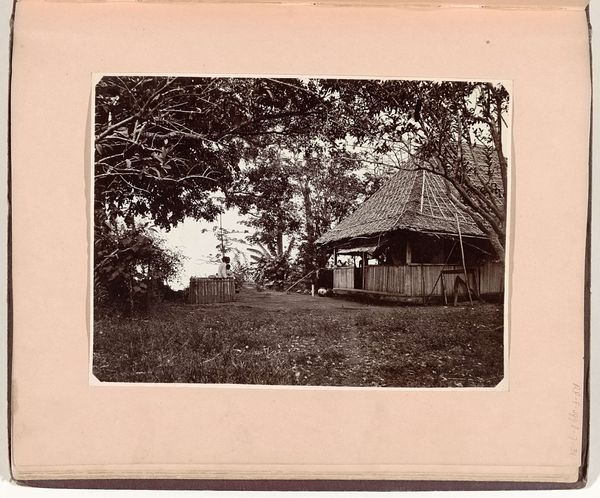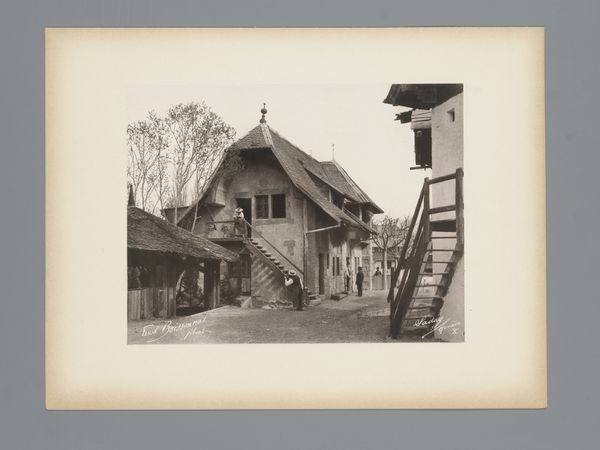
#
aged paper
#
toned paper
#
homemade paper
#
ink paper printed
#
parchment
#
tea stained
#
personal sketchbook
#
watercolour illustration
#
golden font
#
watercolor
Dimensions: height 164 mm, width 225 mm
Copyright: Rijks Museum: Open Domain
Editor: Here we have "Moskee in Batavia met op de voorgrond een man met twee kinderen," created between 1890 and 1910 by Otto Hisgen. The image feels quite serene, almost staged, like a snapshot capturing a specific colonial moment. What do you see in this piece that goes beyond its tranquil surface? Curator: I see a powerful visual document deeply embedded in the narratives of colonialism. It depicts a mosque in Batavia, now Jakarta, with an Indigenous family in the foreground. This immediately prompts questions about power dynamics and representation. Consider the framing: the mosque, a symbol of local faith, is juxtaposed with this family, all seen through the lens of a European artist. What stories are intentionally highlighted, and which are obscured? Editor: So, it's not just a pretty picture but a deliberate construction? Curator: Precisely. The artist’s perspective is crucial. As a European capturing this scene, Hisgen is participating in the visual language of colonialism, cataloging and possessing through imagery. Think about how images like these were used to portray colonized lands: exoticizing,Othering, reinforcing existing power structures. How might the realities of the Indigenous population and their relationship to the mosque differ from the narrative suggested here? Editor: I never considered the image itself as part of the colonial apparatus, more like a neutral observation. Curator: Nothing is neutral! By critically examining whose story is being told, we can deconstruct the layers of meaning embedded within it and explore the social, political, and racial power dynamics that were at play. This is crucial in understanding art’s role in shaping our perceptions of history. Editor: This really shifts my understanding; I’ll never look at these old photos the same way again. Thank you.
Comments
No comments
Be the first to comment and join the conversation on the ultimate creative platform.
